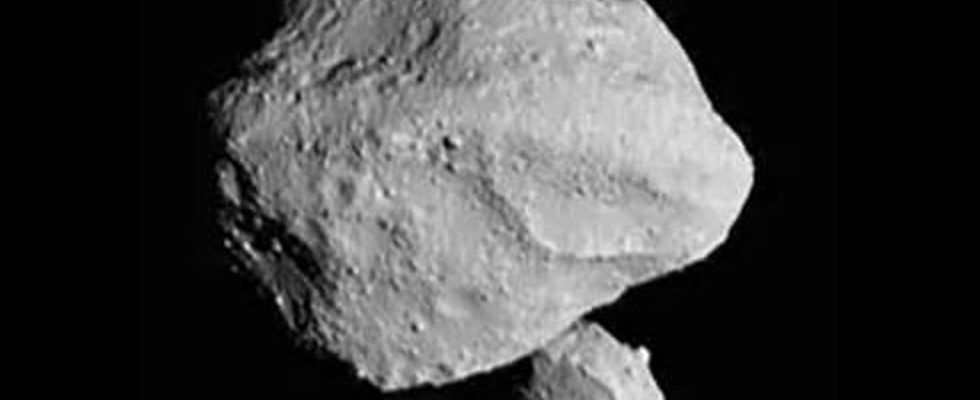While flying over the asteroid Dinkinesh, the Lucy probe discovered that it has a small natural satellite. But a simple change of viewing angle revealed a new surprise!
While the Lucy probe, on its way to Jupiter, continues to transmit its photos of the asteroid Dinkinesh, NASA scientists are not at the end of their surprises. Indeed, the spacecraft made it possible to discover that this asteroid was accompanied by a natural satellite: a small rocky body orbiting around it. But a new image has revealed a new curiosity: this satellite is in fact made up of two small asteroids joined together which rotate together around Dinkinesh! A new configuration that intrigues scientists…
The first photograph transmitted by the space probe made it possible to distinguish a second asteroid located behind Dinkinesh. Scientists had concluded that it was a natural satellite of the latter, which was already a surprise in itself, especially since the shooting was only a simple test for which the asteroid had been chosen as a target. But six minutes after its first photograph, the probe which was continuing its route took a second photograph from another angle. And… new surprise: it is not one but two small asteroids in contact with each other (what we call a contact asteroid) which appeared, orbiting around Dinkinesh. The second small rock body was simply hidden behind the first in the initial image.

Asteroids are fascinating objects of the solar system and this double asteroid constitutes for the moment a mystery of science. Astronomers have their work cut out for them to explain this quite astonishing conformation. Astrophysicist Patrick Michel enthuses: “In short, it’s a very exciting surprise. But, as always, nature likes to challenge us. Finding an explanation will require a little time, some thought, and probably a little more data.” reports the magazine Sky & Space.
According to NASA, it is the first orbiting contact asteroid ever observed. This type of object is very interesting to observe and its study will allow us to better understand the processes that lead to the formation of surprising asteroids. Indeed, what appears to be a cosmic oddity could actually be much more common than we imagine. “Contact binaries appear to be quite common in the solar system,” said John Spencer, deputy scientist on the Lucy project. The surprises are just beginning!
